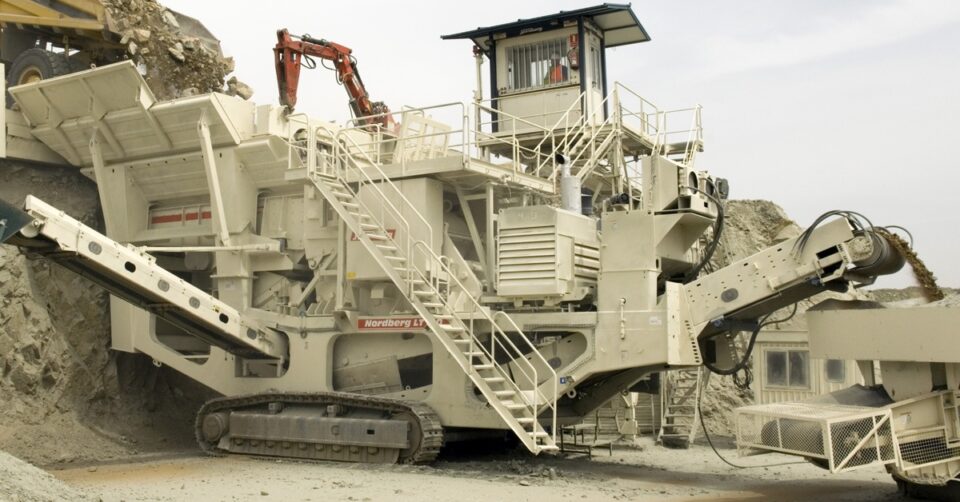Within sectors like mining, construction and recycling that involve material processing, crushers remain indispensable. The purpose of these machines is to reduce large chunks of raw material into smaller bits that can be handled during subsequent phases of processing.
When it comes to efficiency and productivity optimization in material processing, it is important to know the different types of crushers, which come with their own unique features and uses.
Crushing refers to the application of mechanical force to large materials to break them into small pieces. This crucial stage in material processing makes handling better, enhances chemical reactions, and prepares materials for further treatment.
The type of crusher chosen is dependent on the properties of the material as well as its required size reduction and specific use.
Primary Crushers: First Step at Size Reduction
These primary crushers are the first pieces of equipment used to break down large raw materials before other machines handle them. These crushers can deal with huge amounts of material because they are sturdy. Below are some common primary crushers found within industries:
Jaw Crushers
Jaw crushers are among the most typical kinds employed as primary crushers because they work by squeezing between immobile and moving jaw plates. Materials are fed above through a jaw crusher; hence, crushing takes place once a movable jaw plate reciprocates back and forth while grinding out these rocks into small sizes. Jaw crushers are known for their effectiveness, especially when dealing with hard minerals like ores or granite.
- Advantages: Its structure is simple, functions reliably, and can be easily maintained.
- Applications: mining industry; construction activities, including demolitions.
Gyratory Crushers
Another kind is referred to as gyratory crushers, which serve as primary crushers made up of a concave surface coupled with a conical head. Material gets crushed between gyrating head surfaces (mantle) on one side while rock’s texture remains unscathed due to it being stationary and concave. Gyratory crushers are used for primary crushing in large-scale mining and quarrying, and they can handle high-capacity operations.
- Advantages: it can achieve high throughput rates and is suitable for the most abrasive materials.
- Applications: quarrying and large-scale mining activities.
Secondary Crushers: Reducing Materials Size Even More
Secondary crushers reduce material size after primary crushing to prepare it for tertiary crushing or direct use. The purpose of secondary crushers, among others, is to handle materials that have already undergone primary crushing.
Cone Crushers
Gyratory-like crushers are found in this group called cone crushers, but for secondary purposes. They feature a cone-shaped crushing head gyrating within a bowl-shaped concave. This type of crusher employs compressive forces during the process of crushing between the concave and the cone.
- Advantages: It has a good product shape, can produce aggregates of various shapes and sizes, and allows for easy application changes.
- Applications: secondary stage for mineral production, construction aggregate processing, as well as recycling industry.
Impact Crushers
Quick impacts guide impactors, which come under this type of crusher when breaking down materials. There are two main types of these crushers: horizontal shaft impactors (HSI) and vertical shaft impactors (VSI).
HORIZONTAL SHAFT IMPACTORS (HSI):
These have a fast-spinning rotor with wear-resistant tips that revolve around hard surfaces against which the material is intended to be thrown upon being crushed in its chamber. Limestone is an appropriate raw material for this machine because it doesn’t require much energy to crush it.
VERTICAL SHAFT IMPACTORS (VSI)
This category applies different principles where accelerated material hits a stationary surface after being propelled by a rapid spinning rotor on one side. Such machines produce clean sand or aggregate at a high quality level with ease.
- Merits: high crushing ratio and production of fine particles that are uniform.
- Uses: aggregate making, recycling, mineral dressing.
Tertiary Crushers: Acquiring Fine Material Dimensions
These crushers follow secondary ones in reducing the size to a final one for application or further processing.
Roll Crushers
Roll crushers include two or more rolls rotating in opposite directions. Compression and shear forces work together to crush the material as it feeds between the rolls. They can be single rolls, double rolls, or multi-rolls, as the required capacity and material characteristics dictate.
- Advantages: simple design, low maintenance cost, and effectiveness for fine crushing.
- Applications: coal, clay, soft rock crushing.
High-Pressure Grinding Rolls (HPGR)
HPGRs represent recent additions to the crushing industry that use both high-pressure grinding and roll crushing principles. This causes great reduction in size by applying compressive force on it with counter rotating rolls.
- Advantages: energy efficiency, high throughput rate, and ability to handle difficult materials.
- Applications: Cement manufacturing industries, mining industries and ore processing plants
Special Crushers for Exceptional Applications
Apart from primary, secondary, and tertiary crushers, there are some other types of crushers designed for specific applications, depending on the nature of the raw materials. These crushers often offer unique value propositions targeting niche markets:
Hammer Crushers
Hammer crushers employ high-speed rotating hammers to strike against rock surfaces along their natural cleavage lines; they are highly suitable for brittle materials.
- Advantages: high reduction ratios are appropriate for low-to-medium hardness materials.
- Applications: coal, limestone, and gypsum.
Mobile Crushers
Mobile crushers allow on-site crushing, thereby saving transportation costs. These types of crushers are mounted on tracks or wheels, which make them easily movable within the site as well as between sites.
- Advantages: mobility, user-friendliness, and quick installation time.
- Applications: recycling of construction waste, quarrying, and mining.
Know Your Crushers
Understanding the various types of crushers and their uses is essential for optimizing material handling operations. Different crusher types have distinct advantages and are suited to specific materials and applications. Industries can improve efficiency, reduce operating costs, and achieve targeted size reductions by selecting the appropriate crusher.
These include primary crushers such as jaw or gyratory crushers, secondary crushers like cone or impact crushers, and special-purpose machines like hammers or mobile crushers. This means that any crushing objective in material processing can be matched with an appropriate technology from a wide range of equipment choices.

